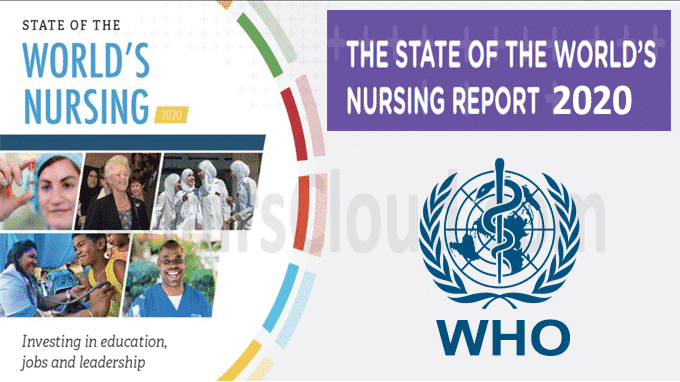 World Health Organization (WHO) in partnership with the International Council of Nurses (ICN) and Nursing Now has released the first “The State of the World’s Nursing 2020” report amid COVID19 pandemic. In accordance with the report, there are 28 million nurses worldwide but still, there is a global shortfall of 5.9 million.
World Health Organization (WHO) in partnership with the International Council of Nurses (ICN) and Nursing Now has released the first “The State of the World’s Nursing 2020” report amid COVID19 pandemic. In accordance with the report, there are 28 million nurses worldwide but still, there is a global shortfall of 5.9 million.
- Countries facing the greatest shortfall of nurses are in Africa, South East Asia and the WHO Eastern Mediterranean region as well as some parts of Latin America.
- Globally, there are roughly 36.9 nurses per 10,000 people, with variations within and across regions. For example, America has 10 times more nurses than African region. There are 83.4 nurses per 10,000 population in the former, there are 8.7 nurses per 10,000 population in the latter.
Key Points:
–Between 2013 and 2018, nursing numbers increased by 4.7 million.
–More than 80% of the world’s nurses work in countries that are home to half of the world’s population.
–One in every eight nurses practices in a country other than the one where they were born or trained.
–One out of six of the world’s nurses is expected to retire in the next 10 years.
–Number of high-income countries in Europe, the Eastern Mediterranean and American regions are “exclusively” dependent on migrant nurses.
–About 90% of all nurses are female, yet few nurses are found in senior health leadership positions, which are held by men.
How Situation can be improved?
–The report estimates that countries experiencing shortages need to increase the total number of nurse graduates by on average 8% per year, along with improved ability to be employed and retained in the health system. This would cost roughly USD 10 per capita (population) per year.
–Countries should empower nurses to take a leadership role, for example by having a government chief nursing officer (or equivalent), and nursing leadership programmes.
State of Nursing in India:
As of 2018, there were over 1.56 million nurses in India and 772,575 nursing associates. Out of this, the share of professional nurses is 67% with 322,827 graduating every year with a minimum training period of four years. Within the health workforce, nurses comprise 47% of the medical staff, followed by doctors (23.3 per cent), dentists (5.5 per cent) and pharmacists (24.1 per cent).
About The State of the World’s Nursing 2020:
It provides an in-depth look at the largest component of the health workforce. Findings identify important gaps in the nursing workforce and priority areas for investment in nursing education, jobs, and leadership to strengthen nursing around the world and improve health for all.
About WHO
Director General– Tedros Adhanom Ghebreyesus
Headquarters- Geneva, Switzerland
About ICN
Headquarters– Geneva, Switzerland
President– Annette Kennedy
Click Here to Download the report




